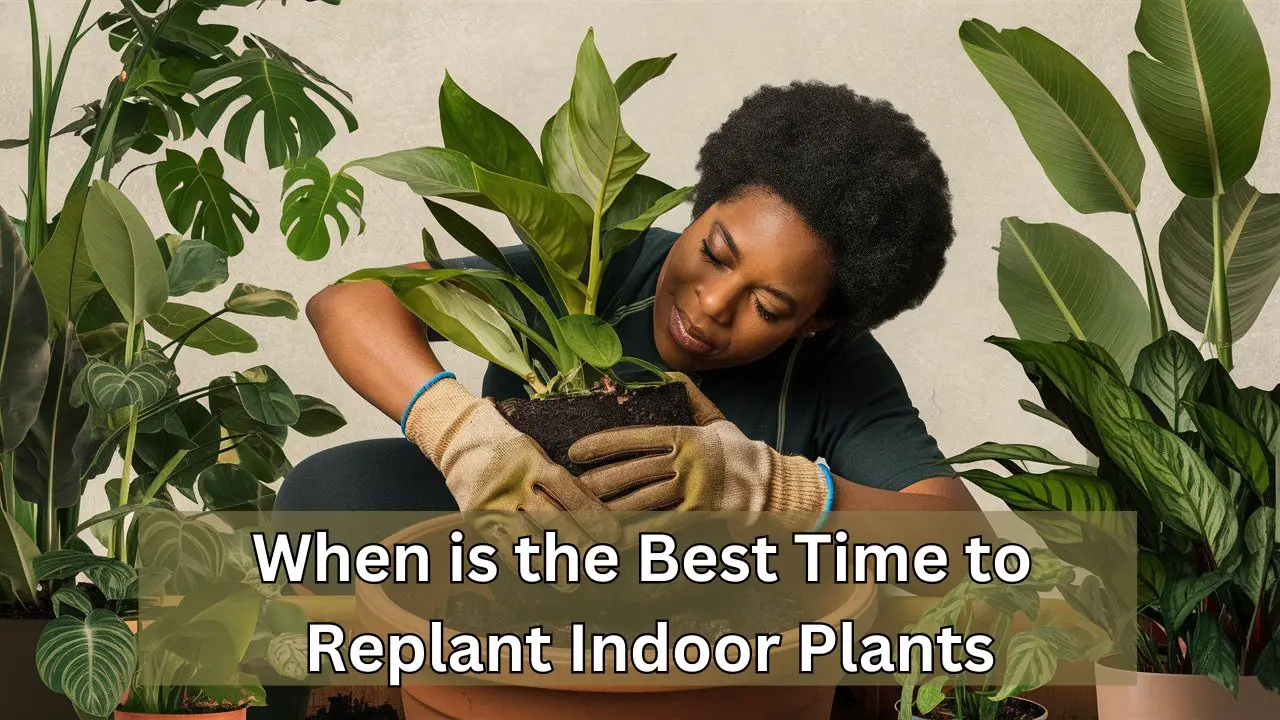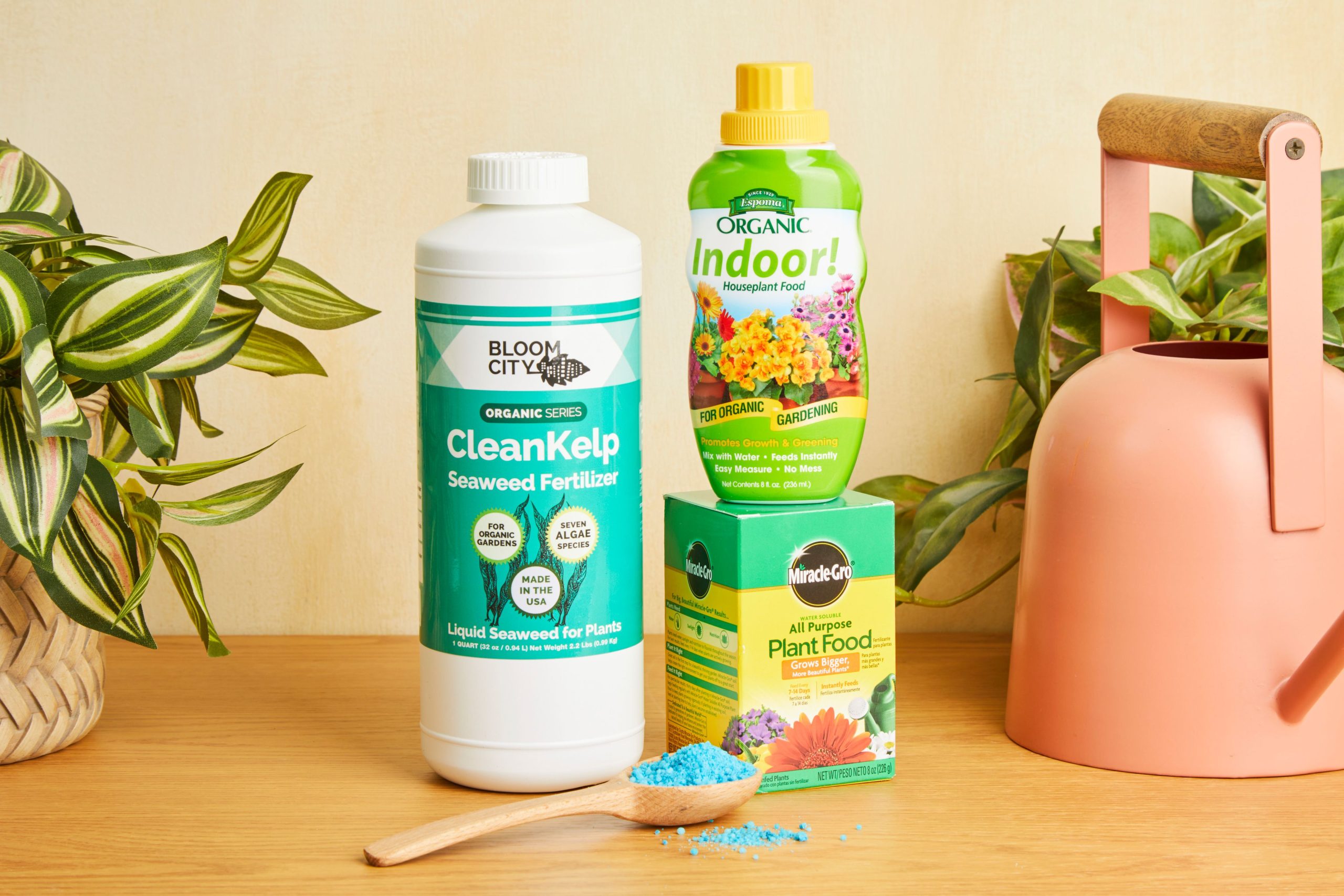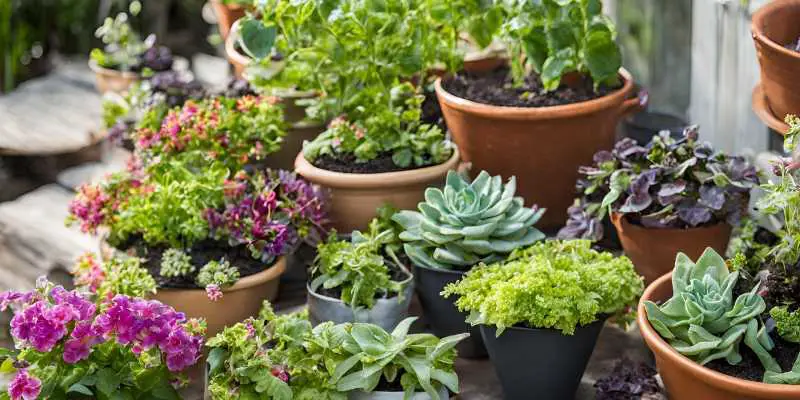The best time to replant indoor plants is during the early spring or late winter. This period allows plants to adjust before their active growth phase.
Replanting indoor plants at the right time is crucial for their health and growth. Early spring or late winter offers the ideal conditions for this task. During this time, plants are emerging from dormancy and preparing for a new growth cycle.
Replanting them now minimizes stress and maximizes their ability to thrive. Ensure you choose an appropriate pot size and fresh soil to provide adequate nutrients. Regular observation of your plant’s needs will help you determine the best replanting schedule. By replanting at the optimal time, you promote vigorous growth and a healthier indoor garden.
Introduction To Indoor Plant Care
Indoor plant care is important for healthy and thriving plants. Providing the right environment ensures they grow strong. Regular care includes watering, light, and nutrient management.
Understanding the needs of your indoor plants is crucial. Each plant species has unique requirements. This guide helps you with replanting and overall care.
Importance Of Timing In Plant Replanting
The timing of replanting affects your plant’s health. Replanting at the wrong time can stress the plant. Stress may lead to stunted growth or even death.
The best time to replant is usually during the growing season. This is often in spring or early summer. Plants are more resilient and can recover quickly.
Replanting during the dormant season, like winter, is risky. Plants are less active and may not adjust well. Always check your plant’s specific needs for the best results.
Key Factors Influencing Plant Growth Indoors
Several factors influence indoor plant growth. These include light, water, temperature, and soil quality. Each factor plays a vital role in your plant’s health.
| Factor | Details |
|---|---|
| Light | Ensure your plant gets the right amount of light. Some plants need bright light; others prefer shade. |
| Water | Water your plant according to its needs. Overwatering can be harmful. Check the soil before watering again. |
| Temperature | Most indoor plants thrive in moderate temperatures. Avoid placing them near heaters or air conditioners. |
| Soil Quality | Use high-quality soil for your plants. Good soil provides necessary nutrients and proper drainage. |
Paying attention to these factors helps your plants grow healthy. Regularly monitor and adjust as needed for the best results.
Recognizing Signs Of An Overgrown Plant
Identifying when your indoor plant needs replanting is essential. Overgrown plants show clear signs. Being attentive helps keep your plants healthy and thriving.
Visible Roots And Cramped Pots
One of the first signs is visible roots. Check if roots are peeking out of the pot’s drainage holes. Roots growing above the soil surface also indicate an overgrown plant.
Another sign is a cramped pot. If the plant looks too big for its container, it’s time to replant. Plants need space to grow. A small pot restricts root expansion and nutrient absorption.
Slowed Growth And Nutrient Deficiency Symptoms
Notice any slowed growth? If your plant isn’t growing as quickly, it’s a sign. Overgrown plants struggle to get nutrients from small pots.
Look for nutrient deficiency symptoms. Yellowing leaves, stunted growth, and pale foliage indicate a lack of nutrients. Replanting helps provide fresh soil and space for root growth.
Table of common nutrient deficiency symptoms:
| Symptom | Possible Deficiency |
|---|---|
| Yellowing Leaves | Nitrogen |
| Pale Foliage | Iron |
| Stunted Growth | Phosphorus |
Replanting your indoor plants at the right time ensures their health. Keep an eye on these signs to know when it’s time to act.
Seasonal Considerations For Replanting
Replanting indoor plants is crucial for their health and growth. The season you choose can greatly impact success. Understanding the best seasons and how temperature and light affect plants will help ensure they thrive.
Best Seasons For Plant Transition
The ideal seasons for replanting indoor plants are spring and summer. During these seasons, plants are in their growth phase.
- Spring: Plants wake up from dormancy and start growing.
- Summer: Plants have plenty of energy and light.
Replanting during these seasons gives plants the best chance to adjust and thrive.
How Temperature And Light Affect Replanting Success
Temperature and light are critical for plant health. Too much or too little of either can stress plants.
| Factor | Optimal Condition | Effect on Replanting |
|---|---|---|
| Temperature | 65-75°F (18-24°C) | Encourages growth and root development. |
| Light | Bright, indirect light | Supports photosynthesis and overall plant health. |
Ensuring the right temperature and light levels will help your plants adjust to their new pots and continue to thrive.

Credit: plantperfect.com
Assessing Soil Quality And Type
Indoor plants need healthy soil to grow well. Assessing soil quality and type is key for happy plants. Check the soil regularly to ensure it’s not compacted or depleted. Healthy soil supports healthy roots and vibrant growth.
When To Change The Soil
Soil loses nutrients over time. Change the soil every 12 to 18 months. If the plant shows yellow leaves, poor growth, or smells bad, it’s time for fresh soil. Repotting helps your plant get new nutrients and better drainage.
Choosing The Right Soil For Your Plant
Different plants need different soils. Use the right soil mix for your plant type. For example:
- Cacti and Succulents: Choose a sandy, well-draining mix.
- Tropical Plants: Use a rich, peat-based soil.
- Orchids: Opt for a bark-based mix.
The right soil keeps your plant healthy and happy. Always use fresh, sterile soil to avoid pests and diseases.
| Plant Type | Recommended Soil |
|---|---|
| Cacti and Succulents | Sandy, well-draining mix |
| Tropical Plants | Rich, peat-based soil |
| Orchids | Bark-based mix |
Check the label on the soil bag for details. Make sure it matches your plant’s needs.
The Role Of Plant Species In Timing
Replanting indoor plants is crucial for their growth and health. The timing for replanting varies based on the species of the plant. Each plant species has its own growth cycles and needs. Understanding these differences ensures your plants thrive in their new pots.
Tailoring Replanting Times To Specific Plants
Different plants have unique replanting times. For example:
- Succulents: Best repotted in spring or summer.
- Ferns: Ideal to replant in early spring.
- Orchids: Repot after they bloom, usually in spring.
These times align with their growth periods. Knowing the right time helps the plant adjust better. Always check the specific needs of your plant species.
Understanding Dormancy Periods
Plants have dormancy periods when they rest. This usually occurs in winter. During dormancy, plants slow down their growth. Replanting during this time can stress the plant.
For example:
| Plant | Dormancy Period |
|---|---|
| Cacti | Winter |
| Fiddle Leaf Fig | Winter |
Understanding dormancy helps you avoid replanting at the wrong time. Always wait until the plant’s growth phase begins. This ensures the plant has enough energy to adapt.
Preparing For The Replanting Process
Preparing for the replanting process is essential to ensure your indoor plants thrive. Careful planning and proper execution can make a significant difference. Follow these steps to make replanting smooth and successful.
Gathering The Necessary Tools
- New pots: Choose pots with drainage holes.
- Potting soil: Use high-quality soil suitable for your plant type.
- Gardening gloves: Protect your hands during the process.
- Watering can: Keep water ready to hydrate the plants.
- Pruning shears: Trim any damaged roots or leaves.
- Shovel: Helpful for scooping soil and transferring plants.
Steps To Minimize Transplant Shock
- Water the plant: Ensure the soil is moist before replanting.
- Gently remove: Carefully take the plant out of its old pot.
- Trim roots: Cut away any dead or damaged roots.
- Prepare new pot: Add a layer of fresh soil at the bottom.
- Place the plant: Position it in the new pot at the same depth.
- Add soil: Fill around the plant with fresh potting soil.
- Water thoroughly: Give the plant a good drink to settle the soil.
- Monitor: Keep an eye on the plant for signs of stress.
| Tool | Purpose |
|---|---|
| New pots | Provide space for growth |
| Potting soil | Nutrient-rich medium |
| Gardening gloves | Protect hands |
| Watering can | Hydrate plants |
| Pruning shears | Trim roots and leaves |
| Shovel | Scoop soil |
Executing The Replanting
When it comes to indoor plants, replanting them at the right time is crucial for their health. In this section, we will explore the best practices for executing the replanting. We’ll cover techniques for safely removing plants and potting and aftercare best practices. Follow these guidelines to ensure your plants thrive in their new environment.
Techniques For Safely Removing Plants
Removing a plant from its pot can be tricky. Follow these steps for a safe removal:
- Water the plant: Water the plant a day before replanting. This makes the soil moist and easier to work with.
- Gently loosen the soil: Use a small trowel or your fingers to loosen the soil around the edges.
- Turn the pot: Turn the pot sideways or upside down. Gently tap the bottom to release the plant.
- Support the plant: Hold the base of the plant as you slide it out. Be careful not to damage the roots.
Potting And Aftercare Best Practices
Once you have safely removed the plant, follow these steps for potting and aftercare:
| Step | Details |
|---|---|
| Choose the right pot: | Select a pot that is one size larger than the current one. Ensure it has drainage holes. |
| Add fresh soil: | Fill the new pot with fresh, well-draining soil. This provides necessary nutrients. |
| Position the plant: | Place the plant in the center of the pot. Ensure the roots are spread out evenly. |
| Fill with soil: | Add more soil around the plant. Press gently to remove air pockets. |
After potting, it’s important to care for your plant properly. Follow these aftercare best practices:
- Water the plant: Water the plant thoroughly. Ensure the soil is evenly moist.
- Place in proper light: Position the plant in a spot with suitable light. Avoid direct sunlight unless the plant requires it.
- Monitor for stress: Watch for signs of transplant shock, like yellowing leaves. Adjust care as needed.
- Maintain humidity: Some plants thrive in high humidity. Mist the leaves if necessary.
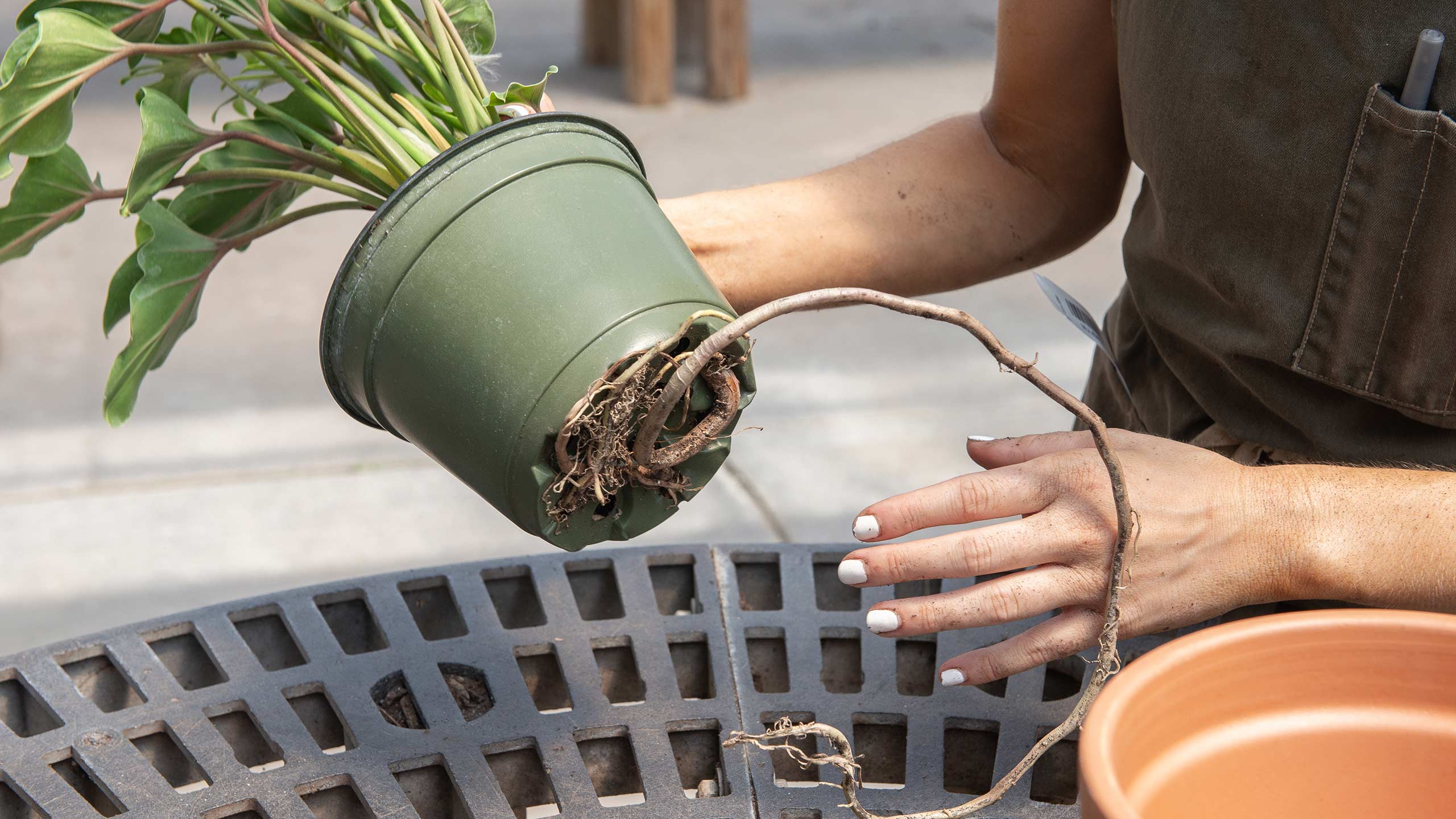
Credit: mulhalls.com
Post-replanting Care
Replanting indoor plants can be a rejuvenating process for your green friends. After replanting, the care you provide is crucial. This stage ensures the plant adapts well to its new environment. Let’s explore the vital steps for Post-Replanting Care.
Monitoring Plant Health
Regularly check your plant for signs of stress. Look for yellowing leaves, wilting, or unusual spots. Use a table to track these symptoms:
| Symptom | Possible Cause | Solution |
|---|---|---|
| Yellowing Leaves | Overwatering | Reduce water |
| Wilting | Underwatering | Increase water |
| Spots | Pests | Check for insects |
Adjusting Watering And Fertilization
After replanting, watering needs may change. Follow these steps:
- Check soil moisture daily.
- Water only when the top inch is dry.
- Ensure proper drainage to avoid root rot.
Fertilization should be adjusted too. Here’s a simple guide:
- Wait two weeks before fertilizing.
- Use half-strength fertilizer initially.
- Gradually increase to full strength as the plant stabilizes.
By carefully monitoring and adjusting care, your indoor plants will thrive post-replanting.
Common Mistakes To Avoid
Replanting indoor plants requires careful attention to detail. Avoid these common mistakes to keep your plants healthy and thriving. Overwatering and ignoring plant stress indicators are two critical areas to focus on. Let’s delve into these mistakes to ensure your indoor plants flourish.
Overwatering After Replanting
Overwatering is a frequent mistake made after replanting. Plants need time to adjust to their new environment. Too much water can lead to root rot and other issues. Ensure the soil is moist but not waterlogged. A simple way to check is by sticking your finger about an inch into the soil. If it feels dry, it’s time to water. If it’s still damp, wait a bit longer.
| Indicator | Action |
|---|---|
| Soil feels dry | Water the plant |
| Soil feels damp | Do not water |
| Yellowing leaves | Check for overwatering |
Ignoring Plant Stress Indicators
Plants show signs of stress when they are unhappy. Ignoring these indicators can be detrimental. Look for wilting leaves, discoloration, and stunted growth. These are signs your plant needs attention. Addressing these issues early can save your plant. Move the plant to a better location with the right light and temperature.
- Wilting leaves: Check for water needs or too much sunlight.
- Discoloration: Inspect for nutrient deficiencies or pests.
- Stunted growth: Ensure the plant has enough space and nutrients.
By being mindful of these common mistakes, you can create a thriving indoor garden. Happy planting!
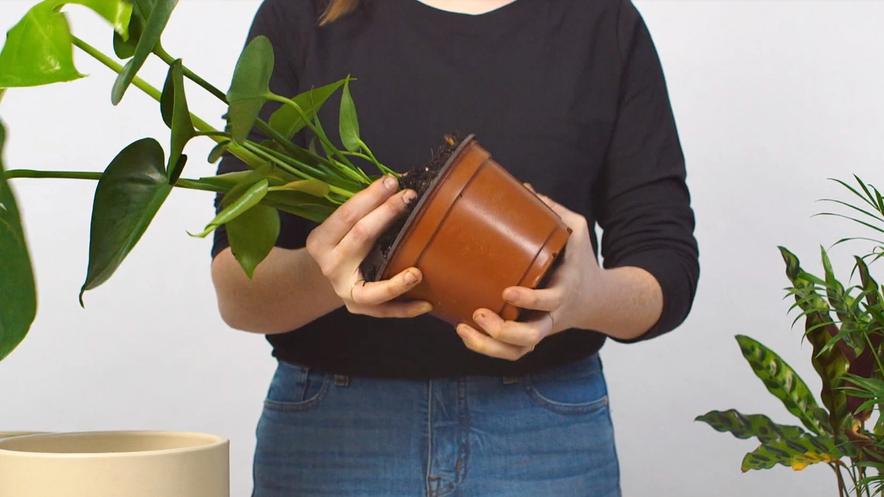
Credit: www.thesill.com
Frequently Asked Questions
What Month To Repot Indoor Plants?
Repot indoor plants in early spring. This allows them to adjust before the growing season. Avoid repotting in winter.
Is It Okay To Repot Houseplants In Winter?
Repotting houseplants in winter is generally not recommended. Plants are dormant and may struggle to adapt. It’s better to wait until spring.
How To Know If A Plant Needs To Be Repotted?
Check for roots growing through drainage holes. Notice if the plant looks cramped or water drains too quickly.
When Not To Repot Plants?
Avoid repotting plants during their dormant season or flowering period. Avoid repotting stressed or newly purchased plants.
Conclusion
Replanting indoor plants at the right time ensures their growth and health. Spring and early summer are ideal. Monitor your plants’ needs and adjust accordingly. Proper timing and care lead to thriving indoor greenery. Happy replanting and enjoy your flourishing indoor garden!

My mission is to help you bring the beauty of nature indoors with expert advice, detailed plant care guides, and creative design ideas.

